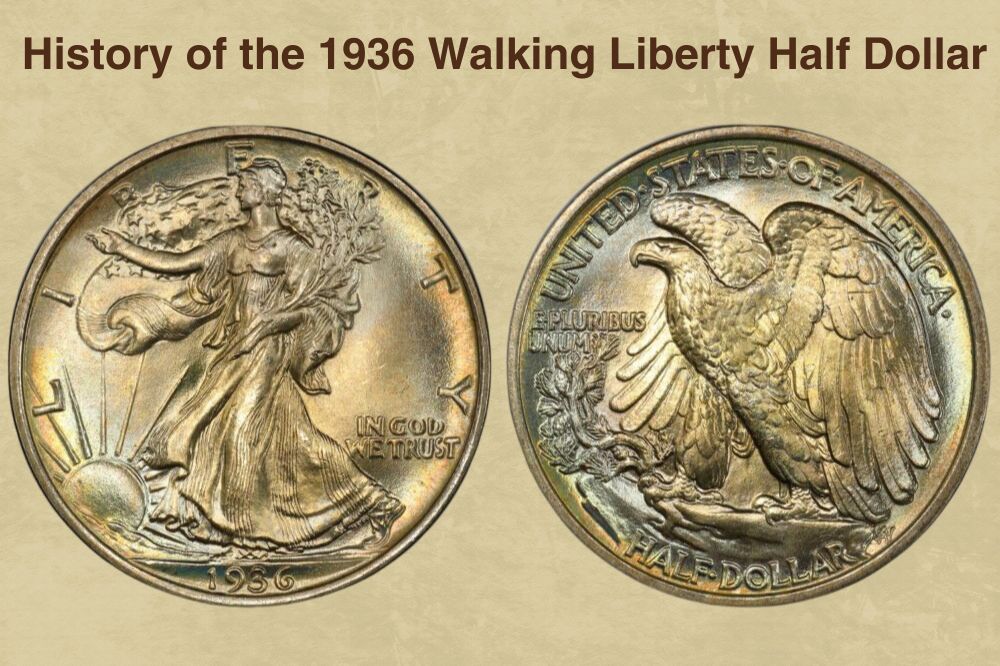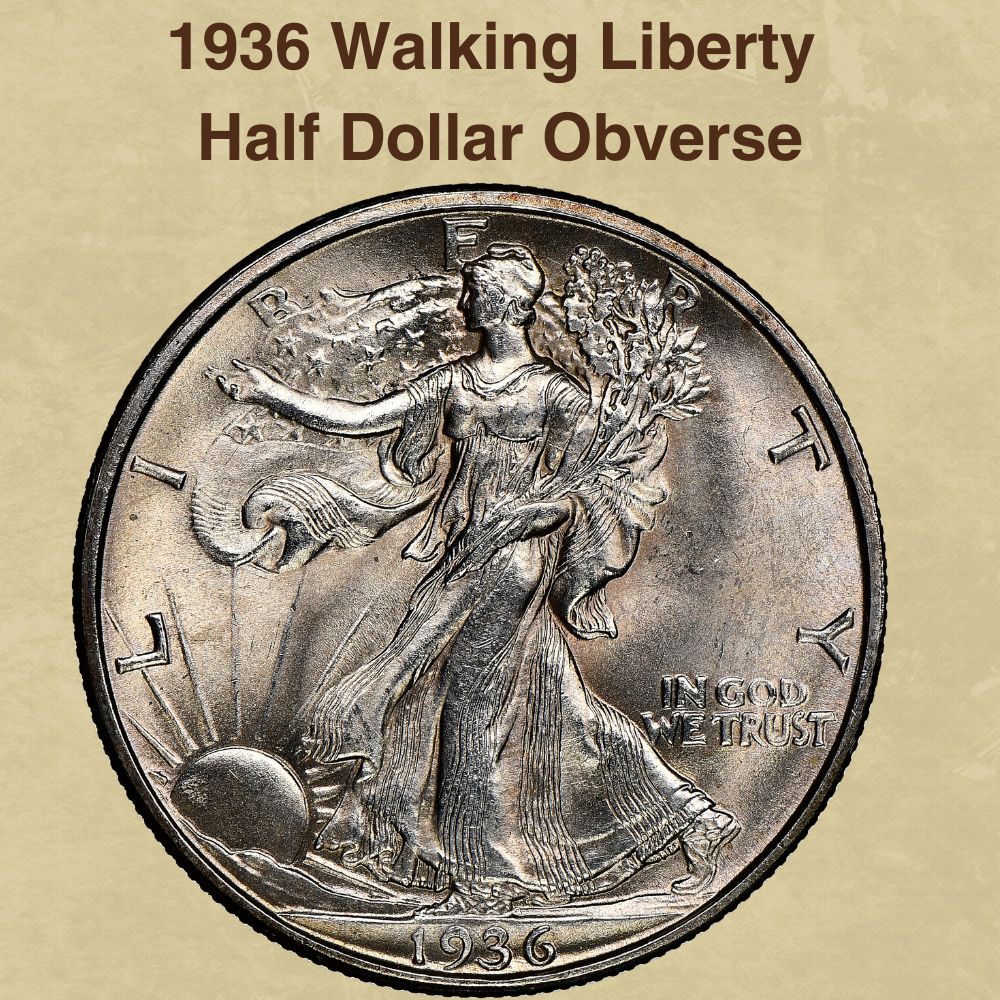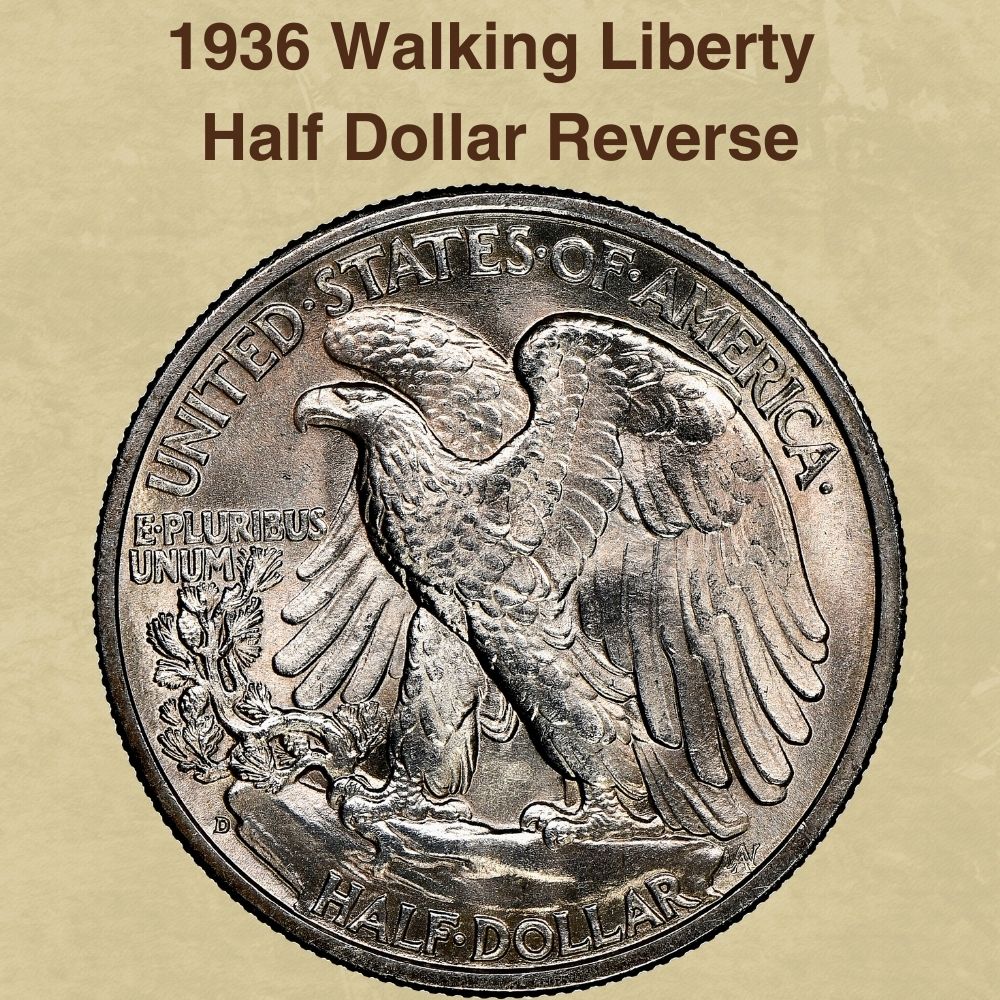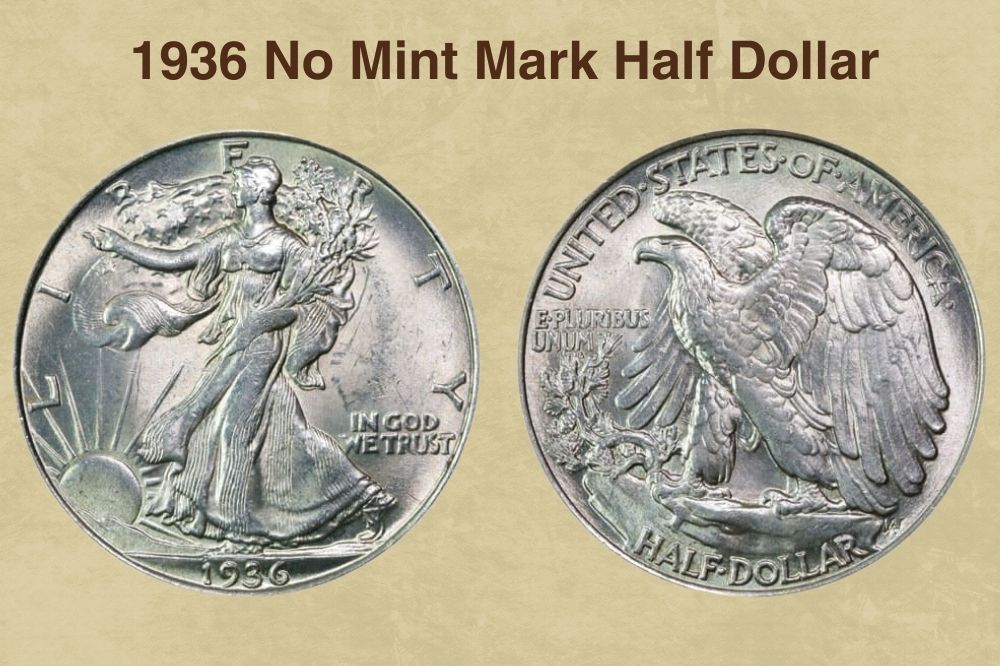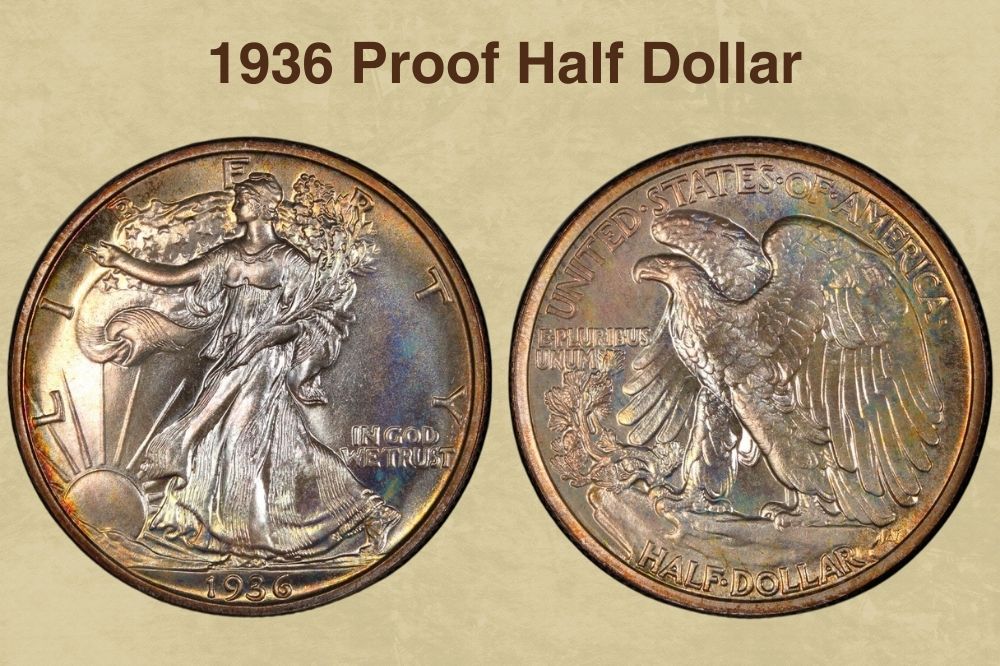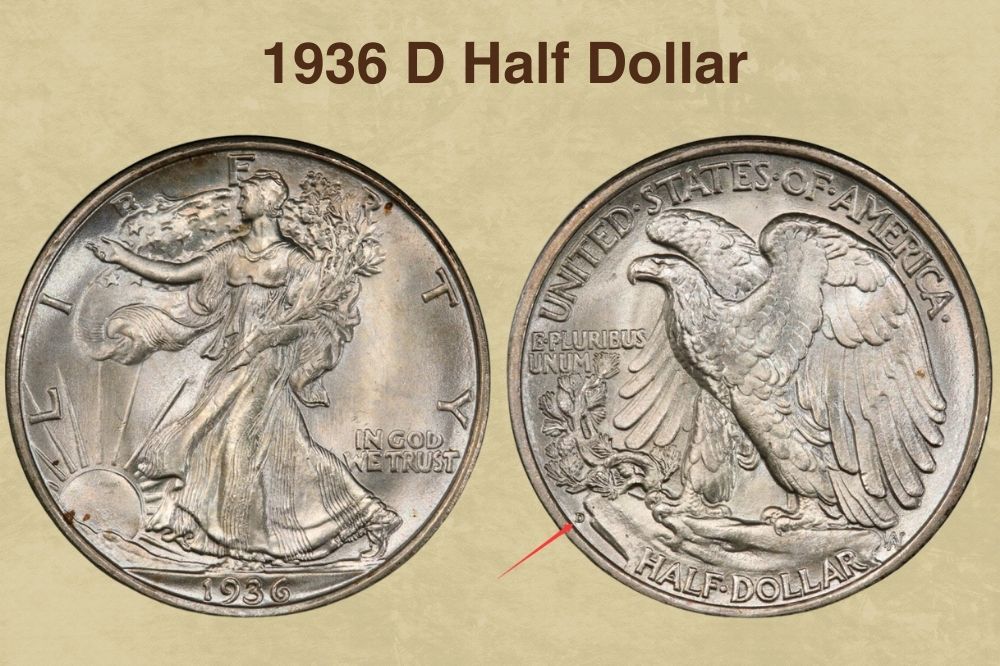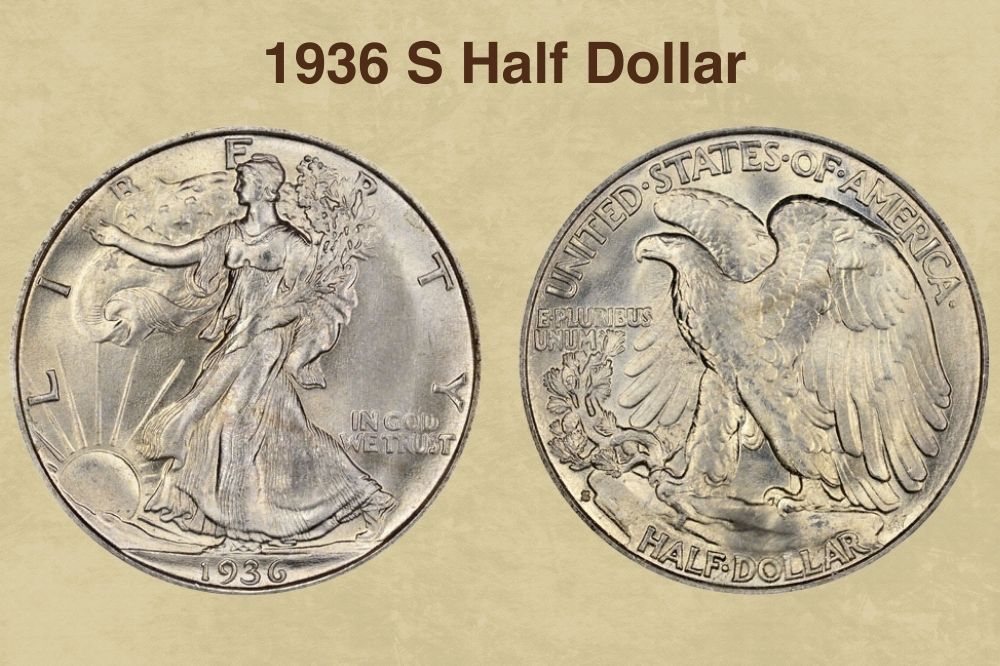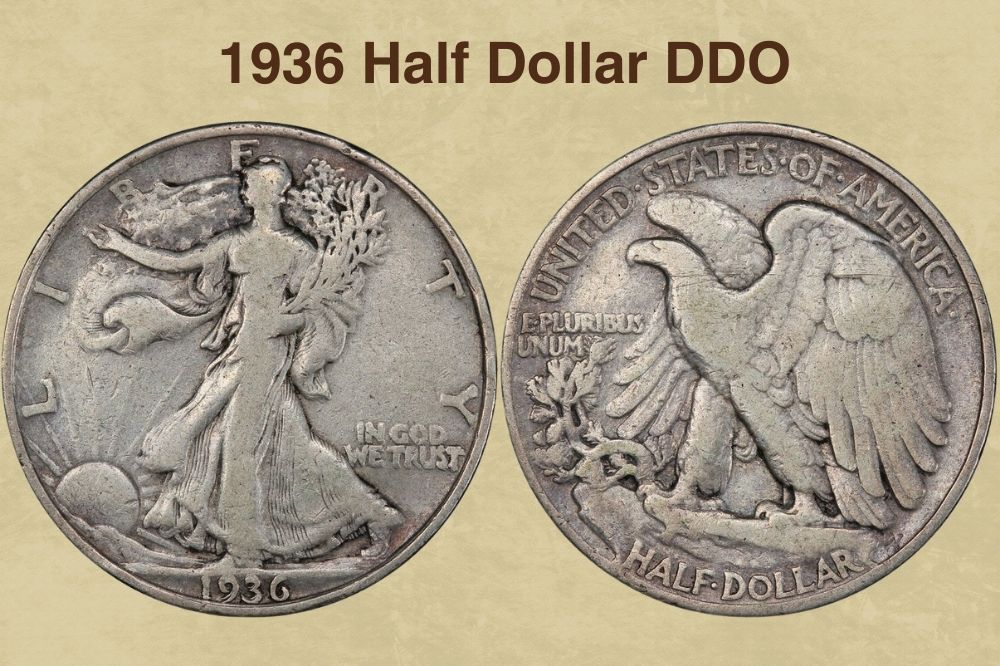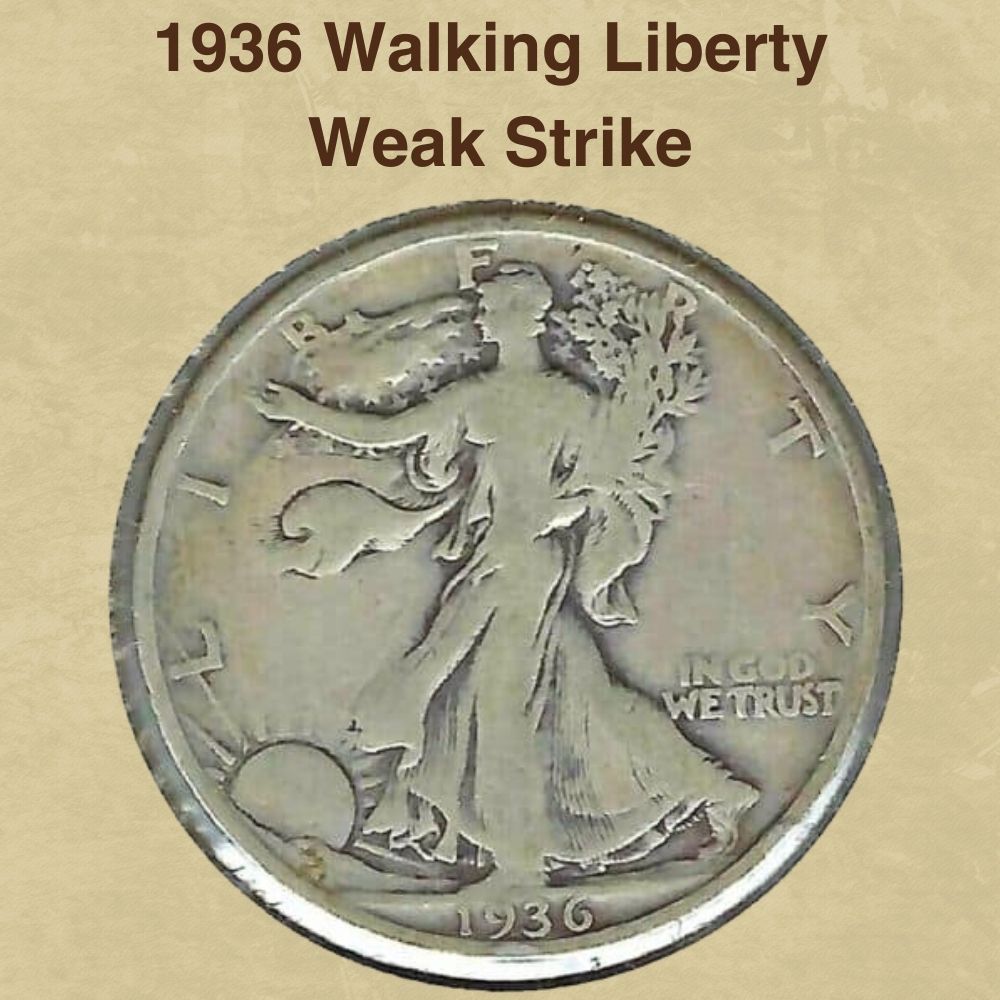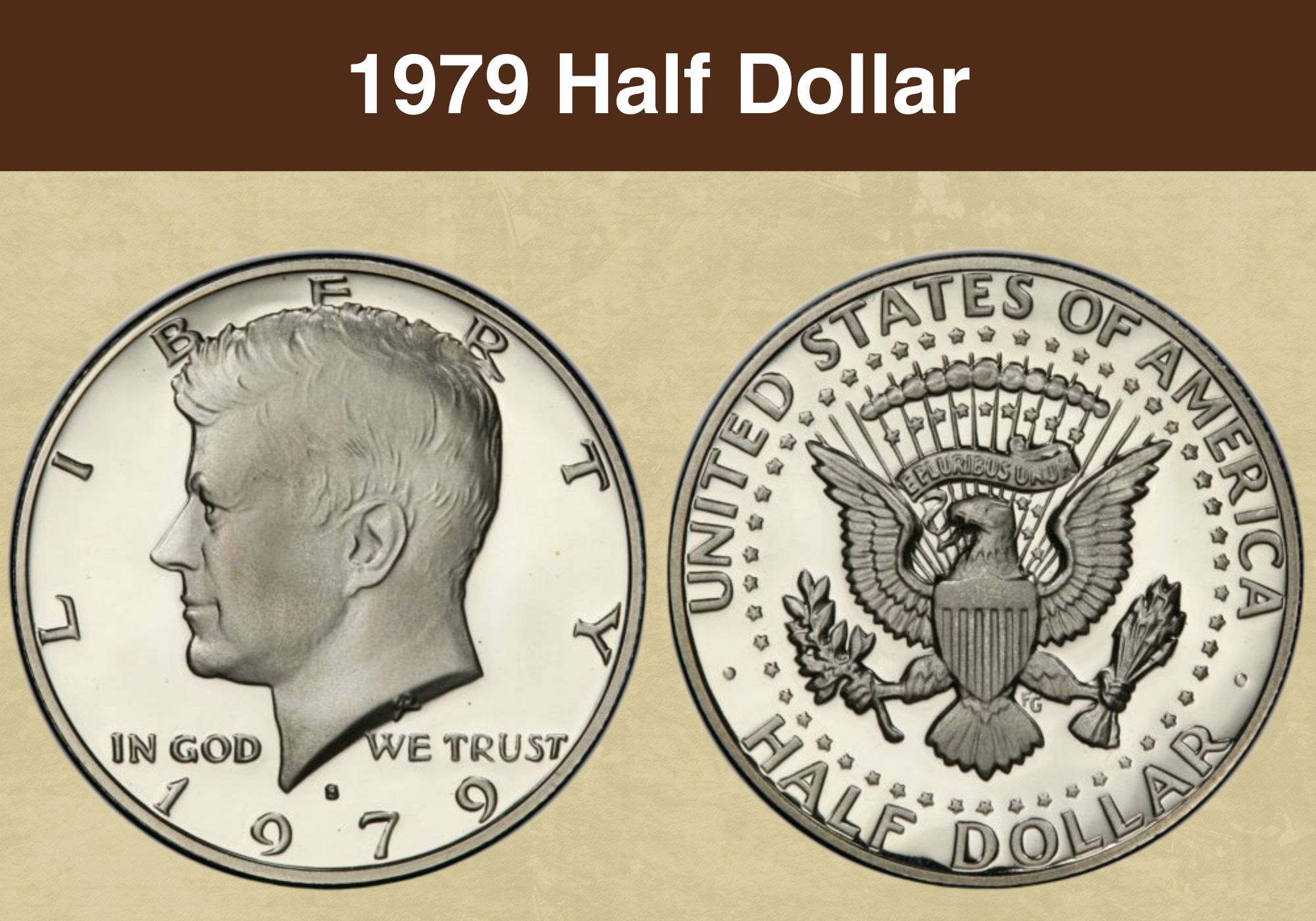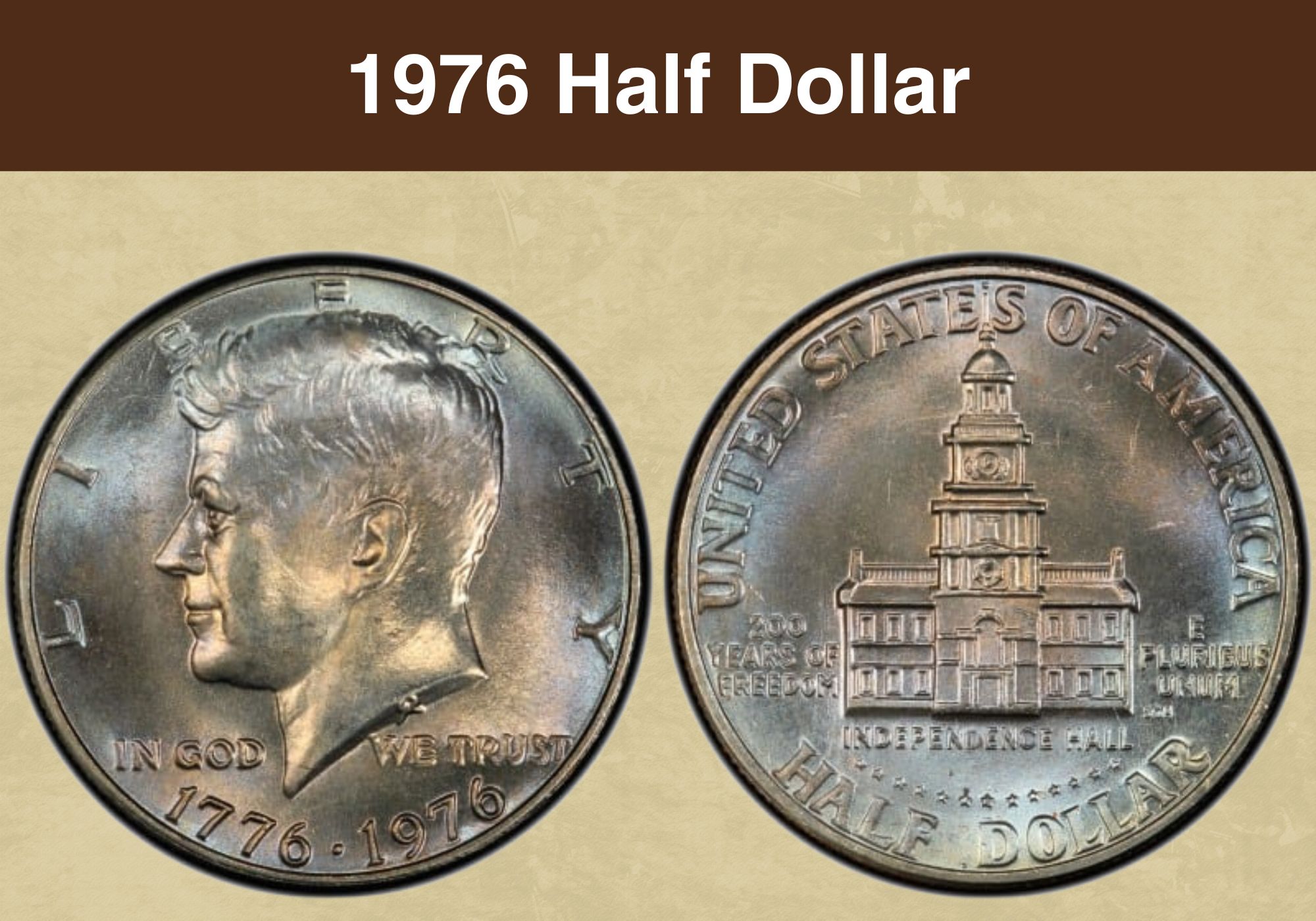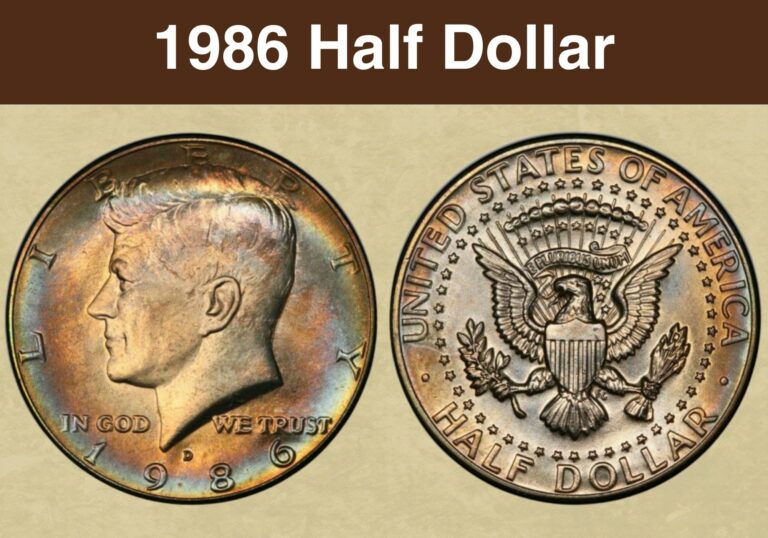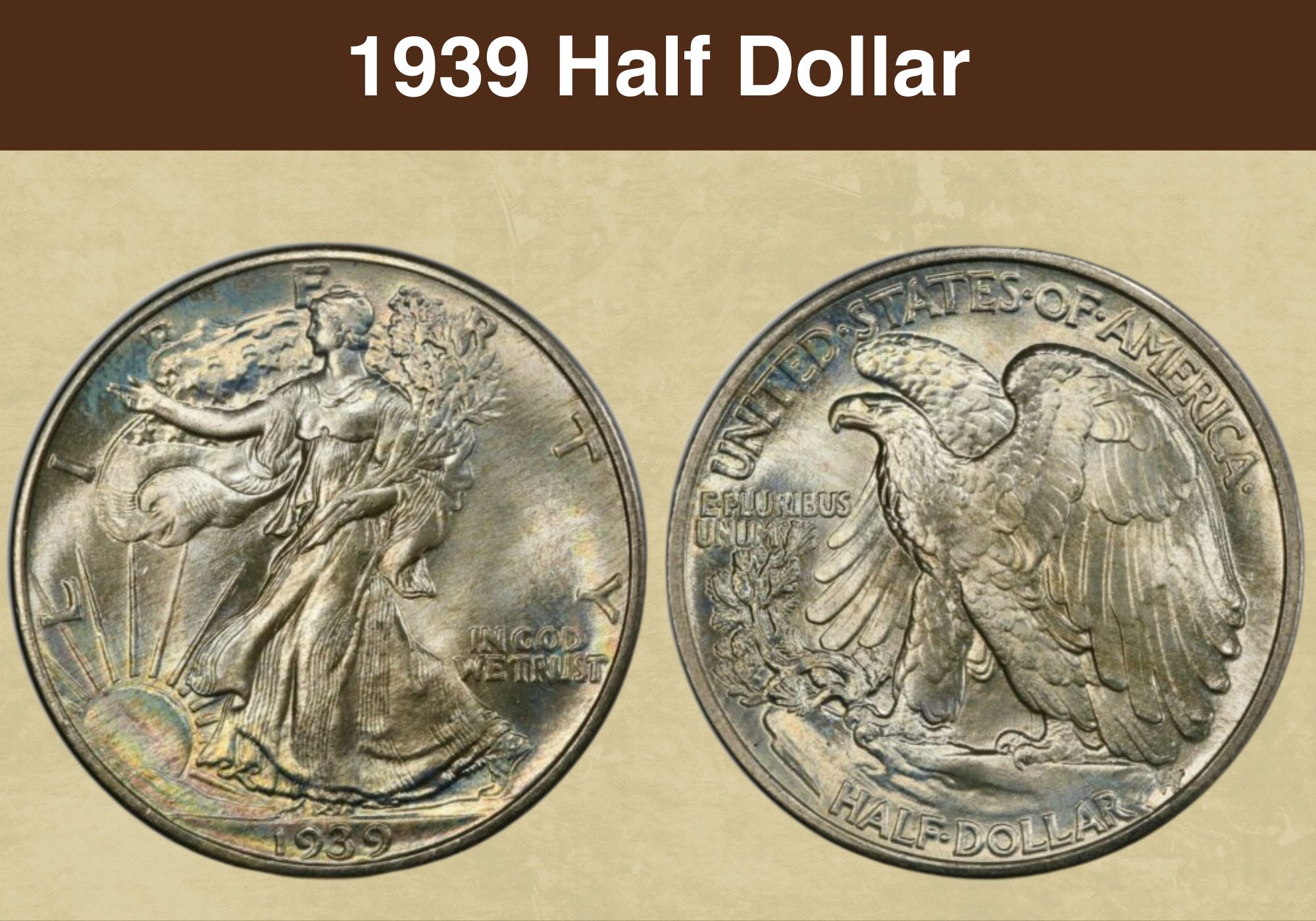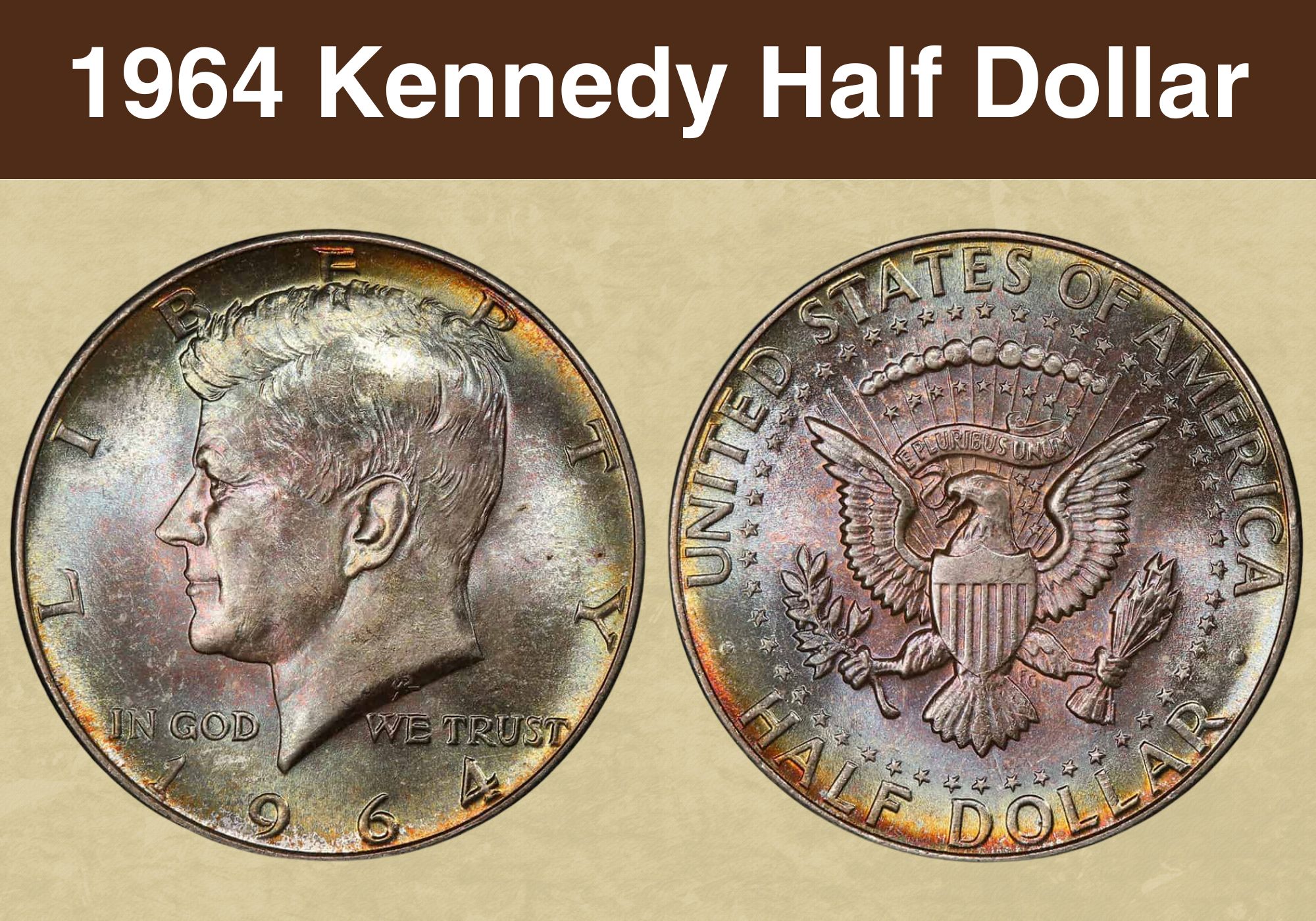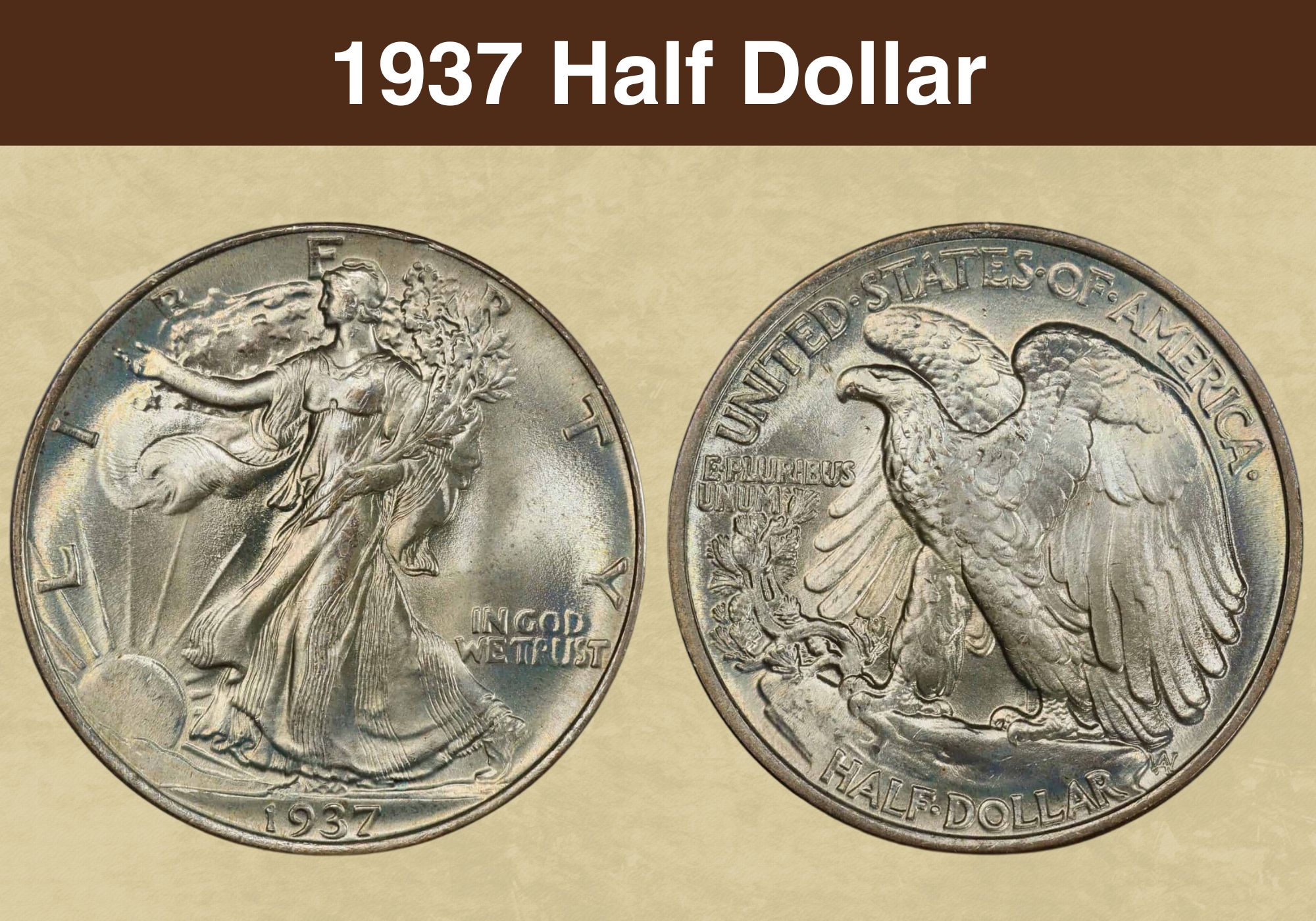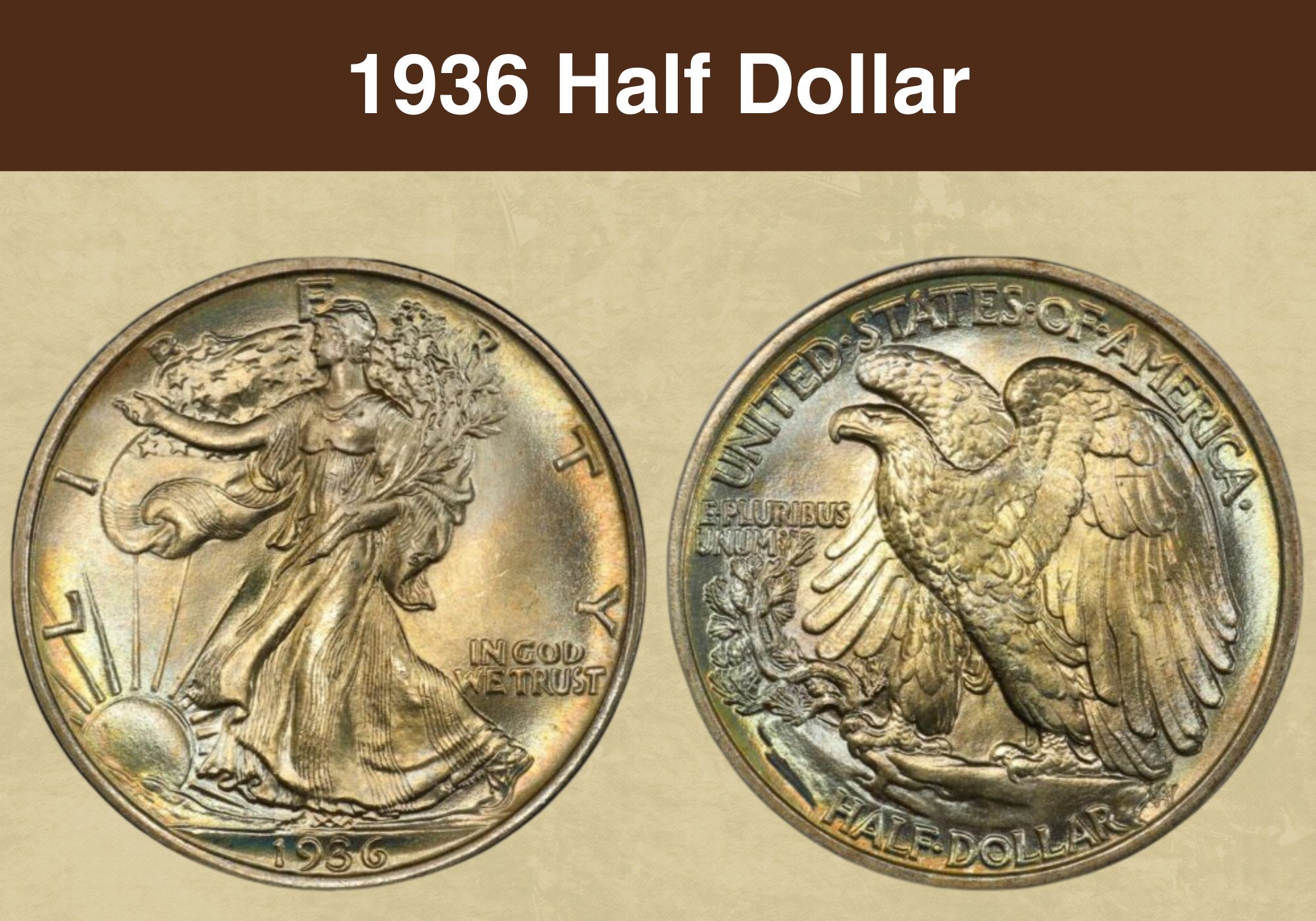
Coin Value Contents Table
- 1936 Half Dollar Value Chart
- History of the 1936 Walking Liberty Half Dollar
- 1936 Half Dollar Value Types
- Features of the 1936 Walking Liberty Half Dollar
- 1936 Walking Liberty Half Dollar Grading
- 1936 Half Dollar Value Guides
- 1936 No mint Mark Half Dollar Value
- 1936 proof Half Dollar Value
- 1936 D Half Dollar Value
- 1936 S Half Dollar Value
- Rare 1936 Walking Liberty Half Dollar Errors List
- Where to Sell Your 1936 Walking Liberty Half Dollar ?
- FAQ about the 1936 Walking Liberty Half Dollar
The Walking Liberty Half Dollar series was produced from 1916 to 1947, based on Adolph A. Weinman’s conceptual solution. Besides coins from regular strikes, many collectors seek proof pieces that were never intended for circulation.
The 1936 Half Dollar value depends on each coin’s appearance and quality. However, post-mint damage and minting errors significantly affect their prices. Therefore, you can find a specimen at $10 or the one that costs several thousand dollars.
1936 Half Dollar Value Chart |
|||
| Condition | 1936 No Mint Mark half-dollar | 1936 D half-dollar | 1936 S half-dollar |
| Good | $19 | $19 | $19 |
| Very good | $20 | $20 | $20 |
| Fine | $21 | $21 | $21 |
| Very fine | $22 | $22 | $22 |
| Extra fine | $25 | $27 | $29 |
| AU | $32 | $61 | $72 |
| MS 60 | $56 | $100 | $156 |
| MS 63 | $89 | $148 | $266 |
| PR 65 | $3,806 | / | / |
History of the 1936 Walking Liberty Half Dollar
The history of silver Half Dollars is long and started in 1794 when the first Flowing Hair half-dollar coins appeared in circulation. The US Mint issued them from 1794 to 1795, when replacing them with the Draped Bust halves with an eagle minted from 1796 to 1807.
The following design was the Capped Bust half-dollars (large- or small-sized pieces), produced from 1807 to 1839. Then, the Seated Liberty halves were actual until 1891. The Barber half-dollars were issued at the turn of two centuries.
Their production started in 1892, and the last pieces were issued in 1915, when the Walking Liberty coins appeared. The US Mint released them into circulation from 1916 to 1947, and the Franklin coins replaced them in 1948.
Their production was continued until 1963 when the 35th President’s assassination caused the appearance of the new coin. The Kennedy half-dollars contained 90% silver initially, then 40% silver, while they are now copper-nickel-clad pieces.
1936 Half Dollar Value Types |
||
| Location | Year | Minted |
| Philadelphia | 1936 no mint mark half-dollar | 12,614,000 |
| Philadelphia | 1936 half-dollar (proof) | 3,901 |
| San Francisco | 1936 S half-dollar | 3,884,000 |
| Denver | 1936 D half-dollar | 4,252,400 |
| Total | / | 20,754,301 |
The Walking Liberty Half Dollars are beautifully designed silver coins that appeared in circulation in November 1916. Their creator was Adolf A. Weinman, and most collectors agree he made probably the most beautiful American coin design ever.
Even though their production lasted from 1916 to 1947, the US Mint issued these coins only sporadically from 1922 to 1933. After the end of the Great Depression, their minting continued as previously.
Nowadays, these old halves are desirable and sought-after collectibles on the market. They are so popular that the US Mint offered the gold Walking Liberty half-dollar variety to collectors in 2016. It was an excellent way to celebrate these lovely pieces’ centennial.
Also read: 13 Most Valuable Franklin Half Dollars Worth Money
Features of the 1936 Walking Liberty Half Dollar
Adolph Alexander Weinman created beautiful Walking Liberty half-dollars, and the US Mint released them into circulation from 1916 to 1947. These coins replaced Barber half-dollars and lasted until the Franklin 50-cent coins appeared in 1948.
The obverse of the 1936 Walking Liberty Half Dollar
The 1936 Half Dollar obverse depicts Lady Liberty walking towards the sun. Her arm extends into the distance towards the left side of the coin while the sun rises in front of her foot.
You can see an American flag over her shoulder while her left hand holds an oak branch, representing military power, and a laurel twig, symbolizing civil strength. The coin surface is also supplemented with two inscriptions (IN GOD WE TRUST and LIBERTY) and the date.
The reverse of the 1936 Walking Liberty Half Dollar
There is an eagle on the 1936 Half Dollar reverse. This bird is a recognizable symbol of the US and an often motif on its coinage. It stands on a mountain pine branch and is prepared to fly.
The denomination is below the eagle’s talons, while the full US name surrounds it from above. The standard Latin motto is located on the left coin side, next to its right wing. The tiny S or D letter found its place below the branch. Besides, you can recognize stylized AW initials under the eagle’s tail.
1936 Walking Liberty Half Dollar Details |
|
| Face value | Fifty cents ($0.50) |
| Shape | Round |
| Compound | Silver content with copper (0.900: 0.100) |
| Coin thickness | 1.8 mm (0,07086 inches) |
| Coin diameter | 30.63 mm (1.2059 inches) |
| Coin weight | 12.50 g (0.40188 troy ounces) |
| Silver weight | 11.25 g (0.36169 troy ounces) |
| Edge | Reeded |
Other features of the 1936 Walking Liberty Half Dollar
The 1936 Walking Liberty is a 50-cent silver coin that is thick a modest 1.8 mm (0,07086 inches), and has a diameter of 30.63 mm (1.2059 inches). Its weight is 12.5 g (0.40188 troy ounces), while the silver content is 11.25 g (0.36169 troy ounces) or 90%.
Also read: 13 Most Valuable Kennedy Half Dollar Worth Money
1936 Walking Liberty Half Dollar Grading
Collectors like coins old over 100 years. Even though the 1936 Walking Liberty Half Dollars are less than 90 years old, they are old enough to become interesting and desirable collectibles. In fact, some people consider these silver pieces an excellent investment.
Therefore, their professional grading is required when you want to get the best value for your piece. Remember that only such estimated coins can reach the highest sums of money at auctions.
| # | Grade |
|---|---|
| 1 | Basal State-1 |
| 2 | Fair |
| 3 | Very Fair |
| 4, 5, 6 | Good |
| 7, 8, 10 | Very Good |
| 12, 15 | Fine |
| 20, 30 | Very Fine |
| 40 | Extremely Fine |
| 50 | About Uncirculated |
| 60 | Mint State |
| 65 | Mint State |
| 70 | Mint State |
Please check our grading guides to know your coin scale, It’s the necessary step to know the exact value of your coin.
Check out now: How to Grade Walking Liberty Half Dollar?
1936 Half Dollar Value Guides
In 1936, three mints issued 20,754,301 Walking Liberty 50-cent coins, including proofs and pieces from regular strikes. The mint in Philadelphia had a much higher mintage than the other two together.
1936 No mint Mark Half Dollar Value
The 1936 half-dollars without the mint mark came from the mint in Philadelphia. Most survived pieces of 12,614,000 produced have a higher value than their denomination, but only those better-graded than GOOD condition are collectible.
You can expect these 50-cent coins in circulated condition to be worth $11 to $ 55, while numerous specimens in the mint state cost $50 to $430. Only a few excellently preserved pieces are more valuable, so you can buy one for:
- $900 to $1,080 (rated MS 67)
- $5,400 to $6,480 (rated MS 68)
The costliest 1936 MS 68 Walking Liberty 50-cent coin sold at an auction for $9,200 in 2012.
1936 proof Half Dollar Value
Besides regularly struck coins, the Philadelphia mint issued 3,901 proofs intended for collectors in 1936. These excellently-looking coins cost up to $1,000 in lower grades, while the most collectible pieces are expensive, with estimated prices of:
- PR 61 – $1,150 to $1,323
- PR 62 – $1,250 to $1,438
- PR 63 – $1,460 to $1,679
- PR 64 – $1,800 to $1,900
- PR 65 – $2,600 to $3,100
- PR 66 – $3,500 to $4,600
- PR 67 – $8,400 to $10,000
Experts agree that 1936 half-dollars rated PR 68 can be worth approximately $50,000 to $70,000, but the best-paid piece is even costlier. In 2005, one coin reached $80,500 at an auction, becoming the priciest in the set.
1936 D Half Dollar Value
With 4,252,400 struck half-dollars, the Denver mint had the second-highest mintage in 1936. Prices of collectible coins are always higher than their face value, and you can expect to get at least $11 per one in GOOD condition. Those with AU quality typically cost $32 to $80.
When purchasing one Walking Liberty 50-cent in the mint state, you should count on the price range from $90 to $888. However, MS 67-graded specimens are assessed at $2,750 to $4,000. One rare 1936 coin with an MS 67+ rating was sold at $38,775 in 2021, reaching the auction record.
1936 S Half Dollar Value
The lowest half-dollar mintage in 1936 was realized in San Francisco, with only 3,884,000 coins. You can buy one of the circulated specimens with the S mint mark for $11 to $170.
Collectors who prefer coins in the mint state should set aside $160 to $1,260 to get one. Only rare half-dollars rated MS 67 are more expensive, estimated at $15,000 to $20,000. The auction record for this coin type is an impressive $35,250 reached in 2023.
Also read: 11 Most Valuable Half Dollars In Circulation
Rare 1936 Walking Liberty Half Dollar Errors List
The 1936 Walking Liberty Half Dollar errors are often more expensive than regular coins. These valuable imperfections occurred during the minting process because the equipment was too worn out or old. Another option was a human error.
DDO
Coins with DDO errors are sought-after nowadays, and the 1936 half-dollars from both mints are no exception. After an improperly aligned die strikes the blank planchet, it leaves a doubled design on the obverse.
Collectors look for pieces with doubling on the date and lettering, particularly on the IN GOD WE TRUST motto. You can buy one such error coin minted in Denver for $110 to $1,000, while those in MS 67 grade are worth about $3,750 to $4,500.
The record price for one 1936 D MS 67 DDO coin was $5,760, reached in 2020. On the other hand, one piece minted in Philadelphia was sold at $15,000 in 2019, despite its relatively low VERY GOOD condition.
Re-punched mint mark (D/D)
Some half-dollars produced in 1936 came with the re-punched mint mark. They appeared after the mint worker hit the D letter twice or more times. Such pieces always have their admirers and typically cost more than regular coins.
Planchet flaws
The imperfect metal blank struck into a coin causes a planchet flaw, like chips or more sizable cracks that disturb its beauty. On the other hand, some collectors prefer such half-dollar errors and are prepared to pay more for them than for regular pieces. In fact, there are numismatics who collect only specimens with unique errors.
Weak strike
This error occurs when the worn-out die strikes the planchet with a lower pressure than required. The result is less distinct design elements. Be careful with this coin type since prolonged use in everyday transactions sometimes looks the same. Even though error coins often have increased value, circulated ones are less expensive.
Where to Sell Your 1936 Walking Liberty Half Dollar ?
Now that you know the value of your coins, do you know where to sell those coins online easily? Don’t worry, I’ve compiled a list of these sites, including their introduction, pros, and cons.
Check out now: Best Places To Sell Coins Online (Pros & Cons)
FAQ about the 1936 Walking Liberty Half Dollar
What makes a 1936 Walking Liberty Half Dollar rare?
Even though the 1936 half-dollars are not particularly rare nowadays, they are collectible, and some people consider them a reliable investment.
Most of the over 20 million coins minted this year are lost or melted over time, so finding those in highly uncirculated conditions can be challenging. For instance, pieces in MS 67 grade are scarce and can be a real treasure.
Which 1936 Walking Liberty Half Dollar are worth a lot of money?
- 1936 PR 68 Walking Liberty 50-cent coin sold at $80,500 in 2005
- 1936 D MS 67+ Walking Liberty 50-cent coin sold at $38,775 in 2021
- 1936 S MS 67 Walking Liberty 50-cent coin sold at $35,250 in 2023
- 1936 VG 10 DDO Walking Liberty 50-cent coin sold at $15,000 in 2019
- 1936 MS 68 Walking Liberty 50-cent coin sold at $9,200 in 2012
- 1936 D MS 67 DDO Walking Liberty 50-cent coin sold at $5,760 in 2020
- 1936 MS 66 DDO Walking Liberty 50-cent coin sold at $1,028 in 2020
How much is the 1936 Walking Liberty Half Dollar from Philadelphia worth?
You can get decent money for most 1936 Walking Liberty half-dollars. Those in circulated condition have a price range from $11 to $ $55, while pieces in the mint state cost $50 to $430. The best-preserved specimens in MS 67 and MS 68 grades can reach $900 to $6,480 at auctions.
What are the priciest Walking Liberty Half Dollar?
You can recognize two types of Walking Liberty half-dollars minted from 1916 to 1947. Since they are old and made of silver, you can expect to pay a significant sum for well-preserved specimens.
Even though regularly struck pieces and proofs in the highest grades are expensive, those intended for collectors often reach lower auction records. Let’s take a look.
Regular coins
- 1918 D MS 66+ Walking Liberty 50-cent coin sold in 2021 at $340,750
- 1919 D MS 66 Walking Liberty 50-cent coin sold in 2004 at $270,250
- 1921 S MS 66 Walking Liberty 50-cent coin sold in 2016 at $188,000
Proofs
- 1936 PR 68 Walking Liberty 50-cent coin sold in 2005 at $80,500
- 1937 PR 68 Walking Liberty 50-cent coin sold in 2020 at $60,000
- 1942 PR 68 Walking Liberty 50-cent coin sold in 2021 at $60,000

